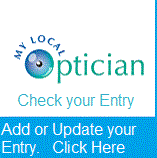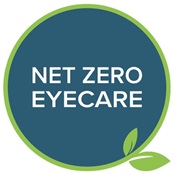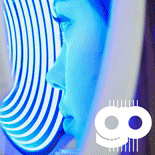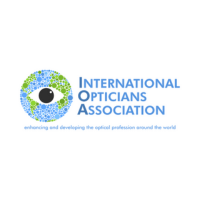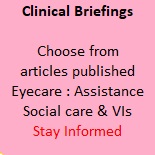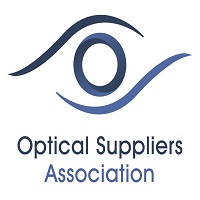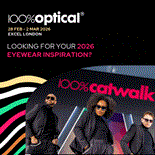Blue Light, a hazard or is it a problem invented by the rest of the world,
outside the UK?
A PHN Briefing Document.
PHN wants to question again the denial made by the College of Optometrists in December 2016 following a story broadcast by the BBC Watchdog Program which claimed “Blue Light” issues as bogus and scaremongering.
The following day the College e-blasted its members with the following quote:

“There is no reliable evidence to say that using devices emitting blue light causes any permanent damage to eyes or eyesight. However, it may make users with preexisting vision defects more aware of them. Blue light sources encountered indoors are unlikely to approach unsafe exposure limits, even for extended viewing times, and the eye possesses natural defences to mitigate blue light damage.”
We are now more than a year down the road from that swift defensive reaction on behalf of the profession and yet anyone who has read articles worldwide both scientific and health guidance as well as anyone attending vision conferences both in Europe and the USA will know that the subject and its possible consequences have far from gone away.
The College has retreated from this complete denial but being evidence based in its guidance still provides little comfort to those worried about being vilified by the Dr Google Press.
In its latest submission in February 2017 from an OPO paper published on its own College website it says:
Reassuringly, recent research suggests that even under extreme, long‐term viewing conditions, the level of blue‐light exposure from computer screens and mobile devices is significantly less than the levels of blue‐light exposure from natural daylight, and further, such exposures do not approach international safety limits.10 However, in addition to potential retinal damage, exposure to short‐wavelength light has been suggested to yield other clinically significant effects. For example, excessive exposure to visible blue light has been suggested to cause eye strain,11 and to potentially promote sleep dysfunction due to a shift in circadian phase with nighttime blue light exposure.12 Given the frequency and duration of digital device use in modern society, should blue‐light exposure be a public health concern?
It does though take account of the ever increasing reports and documentation within the journals on Blue Light which has balanced its viewpoint to one might say non-committal.
The public have access to a publication in pdf form of a lecture given by Thierry Villette PhD, Essilor International and Prof. John Lawrenson FCOptom, City U. London at Optometry Today. Probably too scientific for public consumption.
Our considerations
Let us start with a much respected Professor whose background is entrenched in matters of Vision.
Professor John Marshall, is the Frost Professor of Ophthalmology at the Institute of Ophthalmology in association with Moorfield’s Eye Hospital, University College London. He is Emeritus Professor of Ophthalmology at Kings College London, Honorary Distinguished Professor University of Cardiff, Honorary Professor the City University and Honorary Professor Glasgow Caledonian University. His research over the past forty years has ranged over a number of ocular problems but has concentrated on the inter-relationships between light and ageing, the environmental mechanisms underlying age-related, diabetic and inherited retinal disease, and the development of lasers for use in ophthalmic diagnosis and surgery.
John Marshall will be at Optrafair on the Saturday to discuss this very issue. To assist the debate and provide a starting point we will publish here his overview of the issues involved.
“There are number things that should be considered,” said Marshall.
(1) Radiation action spectra are not absolutes and the wave breaks between the UV and visible are not in themselves absolutes. Action spectra tend to be Gaussian.
(2) While people accept the potential hazards of ultraviolet and protect eyes with specific filtration in for example in intraocular lenses there has never been a clinical trial demonstrating efficacy. I.e. there is no evidence-based medicine. However, few if any ophthalmologist will put a lens in without a UV block. But remember no evidence of efficacy.
(3) Short wavelength blue light is more hazardous than any other portion of the visible spectrum and is taken into account with special calculations in all the world’s laser/light protection documents. The so-called blue light hazard peaks at 441 nm. This initiates two forms of light damage based on two different absorption systems. Type I is very Low level exposures over very long periods depend upon absorption within the photoreceptor cells and type II is short exposures dependent upon absorption in the retinal pigment epithelium. There is no doubt among safety experts under certain circumstances short wavelength blue is hazardous to the retina.
(4) Blue light is attenuated in the normal eye by progressively accumulating yellow pigment in the cornea and more importantly the lens and the luteal pigment (peak absorption 448 nm, i.e. proximal to the peak of the blue light hazard) in the macular. Remember also there are no ” blue photoreceptor cells” in the foveola. From an evolutionary standpoint in terms of vision short wavelength blue is not a requirement for good visual acuity, remember Fovial tritanopia!
(5) Longer wavelength blue (around 460 to 470 nm) is essential for harmonising circadian rhythms and exercising primary control all melatonin levels via melanopsin.
(6) A whole load of garbage has been put into the media concerning iPhones and tablets which although rich in blue are at such low levels they are not going to have any sort of profound effect. This was a rich discussion at the Cambridge symposium light that I chaired two years ago with input from the lighting industry, the regulators and biophysicists.
I have been asked to give a clarification of these issues at Optrafair on Saturday, 14 April.
Contrary to popular belief I don’t have an axe to grind but my personal opinion is if I don’t need optical radiation at a given wavelength then I’m happy to dump it hence I don’t need long wavelength ultraviolet or short wavelength blue. When it comes to my cataract procedure I will have a straight spherical correction with UV and short wavelength blue attenuating properties. I won’t miss anything because the natural lens that is coming out will have far more blue attenuating pigmentation and the artificial lens that goes in!
Further reading from John Marshall
Other studies
A July 2015 study in the journal Free Radical Biology and Medicine found that the more chronic the exposure to blue-light-producing LED lights, the more free radicals in the eye, which further analysis associated with retinal injury. This may contribute to aging of the eye and age-related vision problems in younger patient groups. That’s all the more reason manufacturers are creating new products—such as screen covers for filtering blue light, as well as contact lenses and eye glass lenses embedded with blue-wave-filtering pigment—in response.
A 2014 study in the journal Photochemistry and Photobiology From eye health to systemic issues, now is the time for optometrists to counsel patients on the overall effects of blue light. For instance, two recent studies associate blue light exposure with sleep problems.
Studies found that just a week of increased exposure to blue light before bed cut sleep time by an average of 14 minutes. And it’s not just blue light in ambient lighting. Reading on blue-lit e-reading devices before bed “prolongs the time it takes to fall asleep, delays the circadian clock, suppresses levels of the sleep-promoting hormone melatonin, reduces the amount and delays the timing of REM sleep, and reduces alertness the following morning,” according to a January 2015 study in the Proceedings of the National Academy of Sciences. It also found that reading on such devices, unsurprisingly, increases alertness and delays bedtime without changing when people wake in the morning.
For years, researchers have studied the association between dysfunctional sleep-wake cycles and other health problems, such as diabetes and some forms of cancer. The systemic effect of blue light is something Bryan Rogoff, O.D., a private practice consultant in the Washington, D.C./Baltimore area, always talks to his clients about, especially for different practice models. As doctors of optometry join accountable care groups and move toward a coordinated care model, Dr. Rogoff urges them to screen patients for blue light eye damage—and conduct a thorough case history that incorporates patients’ sleep patterns—and how it relates to metabolic and cardiovascular changes that affect their bodies.
Dr Rogoff stated “As optometrists, we are not just focused on the eye—we are primary care doctors,” he says. “We’re all worried about diabetes and high blood pressure in this country. Blue light is just another risk factor. When we talk to our patients, it’s necessary to make those connections for them.”
Further reading from Rogoff
More Papers
Paper 1
1School of Public Health, China Sui et al
Medical University, Shenyang, Liaoning, People’s Republic of
China
2First Af!liated Hospital of Liaoning University of Traditional Chinese Medicine,
Shenyang, Liaoning, People’s Republic of China
Among the identified risk factors of age-related macular degeneration, sunlight is known to induce cumulative damage to the retina. A photosensitive derivative of the visual pigment, N-retinylidene-N-retinylethanolamine (A2E), may be involved in this phototoxicity. The high energy visible light between 380 nm and 500 nm (blue light) is incriminated.
Read the paper on exposure to Sunlight here
Paper 2 Arnault et al
Emilie Arnault1,2,3, Coralie Barrau4, Ce´ line Nanteau1,2,3, Pauline Gondouin1,2,3, Karine Bigot1,2,3,
Franc¸oise Vie´not5, Emmanuel Gutman1,2,3, Vale´ rie Fontaine1,2,3, Thierry Villette4,
Denis Cohen-Tannoudji4, Jose´ -Alain Sahel1,2,3,6,7,8,9, Serge Picaud1,2,3,8*
1 Institut de la Vision, UPMC Univ Paris 06, UMR_S 968, Paris, France, 2 INSERM, U968, Paris, France, 3 CNRS, UMR_7210, Paris, France, 4 Essilor International, Charenton-le-
Pont, France, 5 Muse´um National d’Histoire Naturelle, Paris, France, 6 Centre Hospitalier National d’Ophtalmologie des Quinze-Vingts, INSERM-DHOS CIC 503, Paris, France,
7 Institute of Ophthalmology, University College of London, London, United Kingdom, 8 Fondation Ophtalmologique Adolphe de Rothschild, Paris, France, 9 Acade´mie
des Sciences-Institut de France, Paris, France
Is sunlight exposure a risk factor for age-related macular degeneration? A systematic review and meta-analysis:
Summary:
Conclusions The epidemiological literature published to date indicates that individuals with more sunlight exposure are at a signi!cantly increased risk of AMD.
So over the last 3 years there has been an increasing urge to offer solutions to a problem that may exist but will not be proven for some time given that some of these issues are long term.
One consensus that appears to be forming re light in general is that our current generations are experiencing far greater light intake than our ancestors, blue or otherwise.
We have extended our waking period with the aid of artificial light whereas in the past our waking hours most likely followed sunrise and sunset. Add to this our change to halogen lighting and our incapability to amuse ourselves without some form of screen entertainment often to the last minute before sleep, it is most probable that whilst Blue Light most probably plays a factor given its proximity to dangerous wavelengths overall it is the volume and intensity of light that has a deleterious effect on our eyes and the bodies functions.
Let’s take a look at what professionals in Europe and the USA consider to be appropriate advice to their populations:
Artificial light from digital devices lessens sleep quality and Melatonin skyrockets when blue light is blocked
July 28, 2017
University of Houston
Summary:
Blue light emitted from digital devices could contribute to the high prevalence of reported sleep dysfunction, suggests new research.
The report states:
There’s no doubt we love our digital devices at all hours, including after the sun goes down. Who hasn’t snuggled up with a smart phone, tablet or watched their flat screen TV from the comfort of bed? A new study by researchers at the University of Houston College of Optometry, published in Ophthalmic & Physiological Optics, found that blue light emitted from those devices could contribute to the high prevalence of reported sleep dysfunction.
Study participants, ages 17-42, wore short wavelength-blocking glasses three hours before bedtime for two weeks, while still performing their nightly digital routine. Results showed about a 58 percent increase in their nighttime melatonin levels, the chemical that signals your body that it’s time to sleep. Those levels are even higher than increases from over-the-counter melatonin supplements, according to Dr. Lisa Ostrin, the UH College of Optometry assistant professor who lead the study.
Melanin as Protection from Harmful UV Light
American Macular Degeneration Foundation
Researchers have identified melanin as the substance in the skin, hair and eyes that absorbs harmful UV and blue light. It is the body’s natural sunscreen protection. Higher amounts of melanin afford greater protection against damaging light rays, but melanin is lost as we age. By age 65, about half of the protection is gone, increasing susceptibility to eye disease such as macular degeneration. The Schepens Eye Institute reports that “the blue rays of the spectrum seem to accelerate AMD more than other rays of the spectrum.” Very bright lights such as sunlight or its reflection in the ocean or desert may worsen macular degeneration. The Institute recommends that sunglasses protect against both blue/violet and UV light.
And from the health and vision industry
All of the leading lens companies provide specifically designed tinted protection to deal with blue light although many since the College position was made clear with a total denial of a Blue Light problem have back pedalled in the UK.
The question is are we letting our UK public down when most other countries are educating their populations about the risks.
Essilor in a public educational ad in the USA say:
WHAT IS HARMFUL BLUE LIGHT?
It’s part of the visible light spectrum, which comes from both the sun and artificial light sources like digital screens and fluorescent lights. This type of light gets absorbed deep in the eye, making it potentially impacting to long-term vision. Overexposure to blue-violet light or Harmful Blue Light, especially outside in the sun and through constant use of electronic devices and screens, is why protecting your vision has never been more important.
ZEISS DuraVision BlueProtect offers protection from the harmful blue light from LED lights, digital devices, TV screens, and computers.
They say: Too much blue light can disrupt sleep.
Viewing digital devices at night can disrupt the brain’s production of melatonin, causing sleep disturbances and a dysfunction of the natural circadian rhythm.
Increased risk of macular degeneration.
The American Macular Degeneration Foundation warns that retinal damage caused by blue light may lead to macular degeneration. Evidence suggests that long-term exposure to blue light may contribute to photochemical damage of the retina (known as “blue light hazard”).*
Hoya
Effective blue light protection
Smartphones, tablets, computers and televisions have become a vital part of our everyday lives. We work, study and relax with them. However, there is a downside to being constantly connected. Research* has shown that 83% of spectacle wearers experiences some form of eye stress during or after using digital devices. This includes eye strain, eye fatigue, and even sleeplessness. Hoya’s BlueControl lens coating helps to combat these effects.
It provides effective blue light protection, ensuring extra comfort in a digital world.
The public has access to this information on many platforms that traverse country borders and here are a couple of information videos you can find on YouTube








